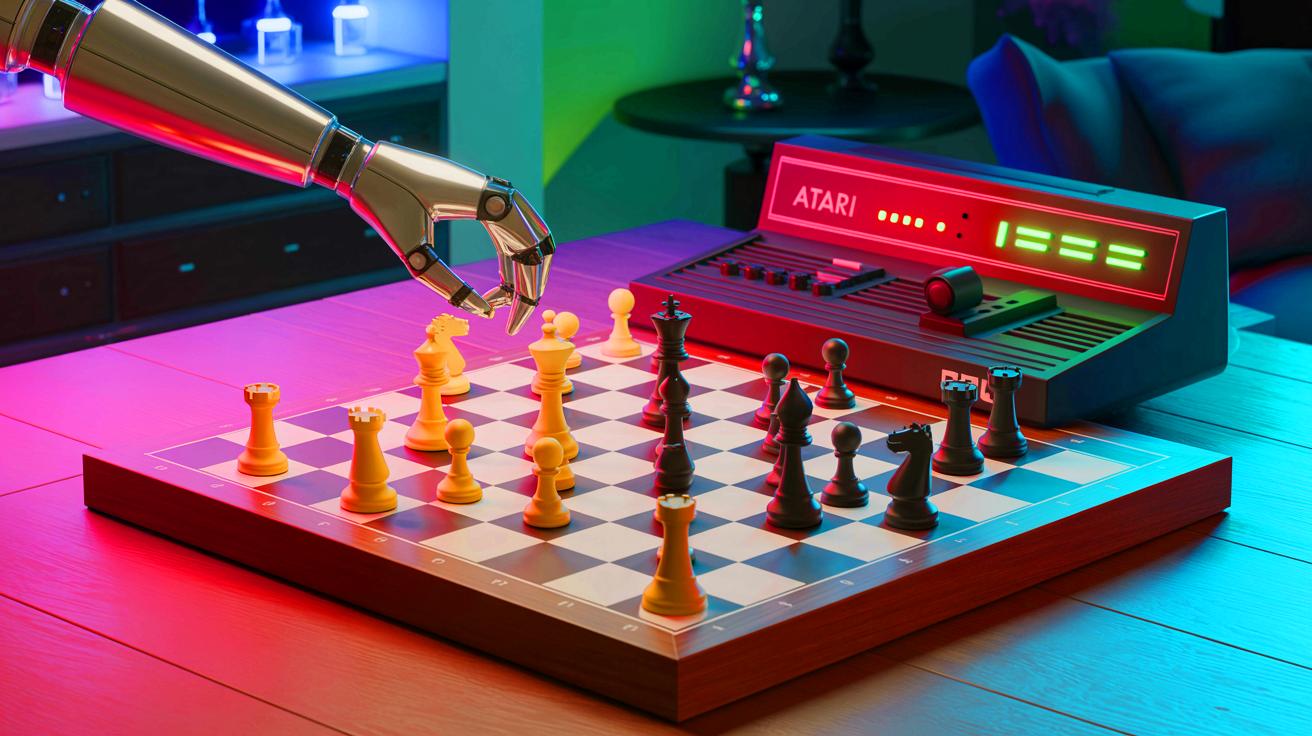“ChatGPT Just Got Wrecked by a 1977 Atari”: Vintage Console Destroys Modern AI in the Most Ridiculous Chess Match Ever – Rude Baguette

News, investigations, and analysis — our top stories every morning to start your day right.
In a surprising turn of events, a vintage Atari 2600 chess engine from 1977 managed to outperform the highly advanced AI, ChatGPT, in a game of chess. This unlikely matchup sparked a conversation about the capabilities and limitations of modern AI technologies. Despite ChatGPT’s reputation as an advanced language model, it was unable to match the strategic prowess of the Atari’s simple, yet effective, chess engine. This unexpected outcome raises intriguing questions about the nature of artificial intelligence and its role in various domains, including gaming.
The Atari 2600, released during the era of Disco Fever, was a groundbreaking gaming console in its time. Its chess engine, though rudimentary by today’s standards, was a marvel of its age. Back in 1977, programming a machine to play chess was a significant accomplishment, especially considering the limited computational power available. The Atari’s chess engine was designed to look ahead just one move, yet it managed to play a legal and coherent game, which was no small feat back then.
What makes the Atari 2600’s performance even more impressive is its simplicity. Unlike modern chess engines that can calculate millions of positions per second, the Atari relied on basic algorithms and rules. Despite these limitations, it maintained a consistent strategy throughout the game, capitalizing on ChatGPT’s errors. This victory highlights the enduring value of focused, specialized algorithms in specific tasks, even when faced with advanced AI systems.
“Real-Life Transformers Are Here”: UK Inventor Builds Shape-Shifting Robot That Morphs Into a Fully Functional Vehicle
ChatGPT, developed by OpenAI, is renowned for its natural language processing capabilities. However, when it comes to playing chess, ChatGPT faces significant challenges. Unlike dedicated chess engines, ChatGPT is a Large Language Model (LLM) designed to predict the next word in a sequence based on its training data. This design is not suited for the complex, rule-based nature of chess.
During the match against the Atari, ChatGPT made several blunders, such as confusing pieces and failing to maintain an accurate board state. These errors stem from its inability to perform logical reasoning required in chess. While ChatGPT excels in generating human-like text, it lacks the precision and strategic foresight necessary for competitive chess. This incident underscores the importance of understanding the specific capabilities and limitations of AI models, which are often task-specific rather than universally applicable.
“The Real Threat Isn’t Your Job”: AI Isn’t Taking Careers—It’s Replacing People Still Learning to Work, and It’s Happening Fast
AI has come a long way since its theoretical inception in the 1940s. Over the decades, AI systems have evolved from simple expert systems to complex neural networks and machine learning models. However, the term AI encompasses a broad range of technologies, each with distinct functionalities. Chess engines, for instance, are highly specialized algorithms designed to evaluate and execute chess moves efficiently.
In contrast, LLMs like ChatGPT are built to handle language and contextual understanding, leveraging vast datasets to generate responses. These models are not inherently designed for tasks requiring precise logical reasoning or rule enforcement, such as chess. This diversity in AI technologies highlights the need for clarity when discussing AI capabilities. Not all AI systems are equal, and their effectiveness varies based on their design and purpose.
“Robot Dogs Just Burned the Stage”: America’s Got Talent Crowd Explodes as AI Canines Unleash Blazing Choreography
The outcome of the chess match between ChatGPT and the Atari 2600 serves as a reminder of the current state of AI technology. While AI has made significant strides, it is not a one-size-fits-all solution. Each AI model excels in specific areas but may falter in others. As AI continues to integrate into various sectors, understanding these nuances is crucial for effective application.
This event also prompts us to rethink our expectations of AI. While LLMs like ChatGPT are invaluable in language processing and conversational tasks, they are not equipped to handle tasks requiring deep logical thinking or adherence to strict rules. Recognizing these limitations can help guide the development of more robust and versatile AI systems in the future.
The surprising victory of a vintage Atari 2600 over ChatGPT in chess challenges our perception of AI and its capabilities. While AI continues to advance, its limitations remind us of the importance of specialized designs for specific tasks. As we explore the potential of AI in various fields, we must ask ourselves: How can we best harness the strengths of AI while acknowledging and addressing its weaknesses?
Did you like it? 4.4/5 (20)
News, investigations, and analysis — our top stories every morning to start your day right.
Wow, who would have thought a 1977 Atari could beat ChatGPT at chess? 😲
News, investigations, and analysis — our top stories every morning to start your day right.
News, investigations, and analysis — our top stories every morning to start your day right.
Type above and press Enter to search. Press Esc to cancel.